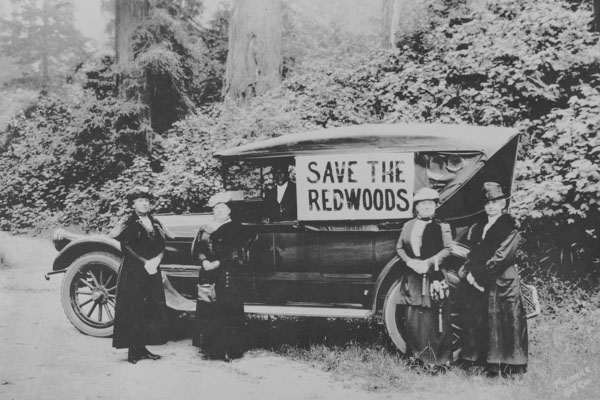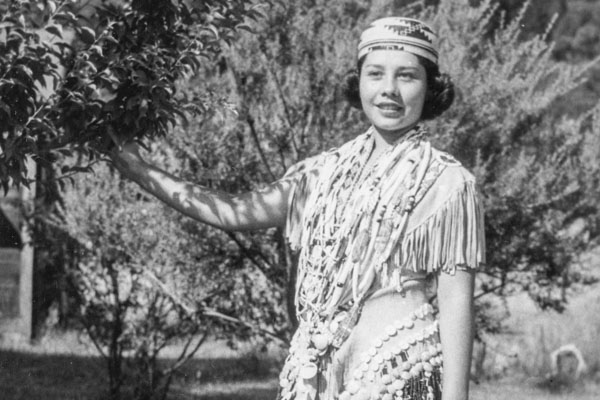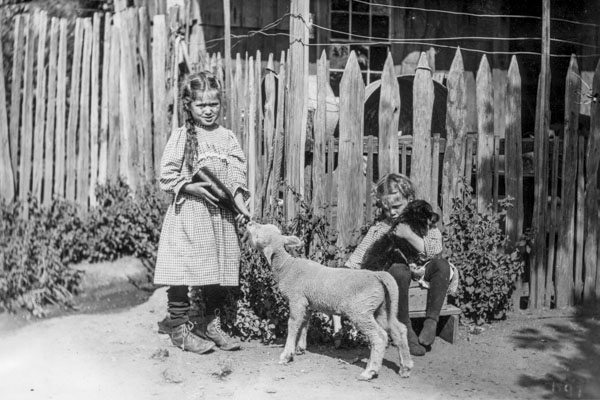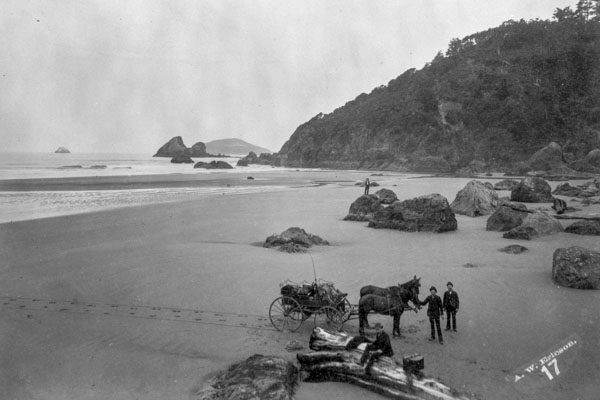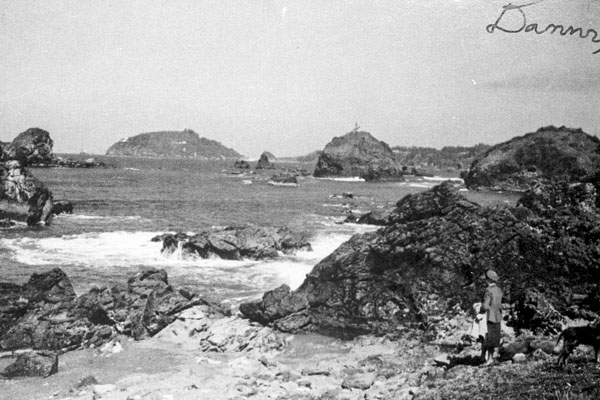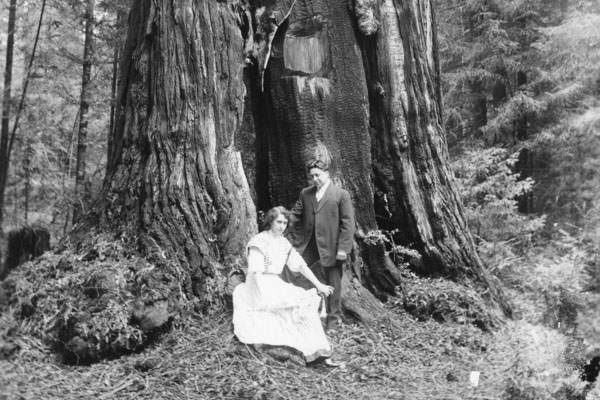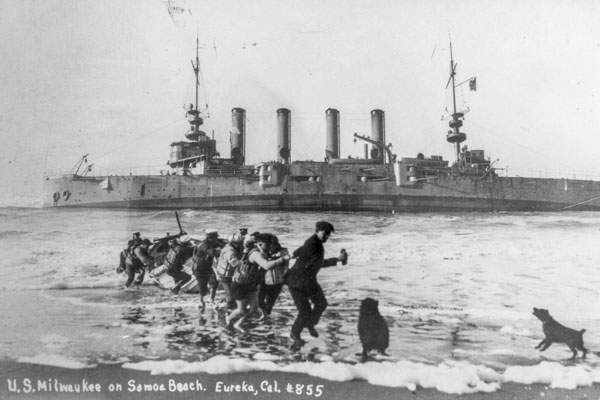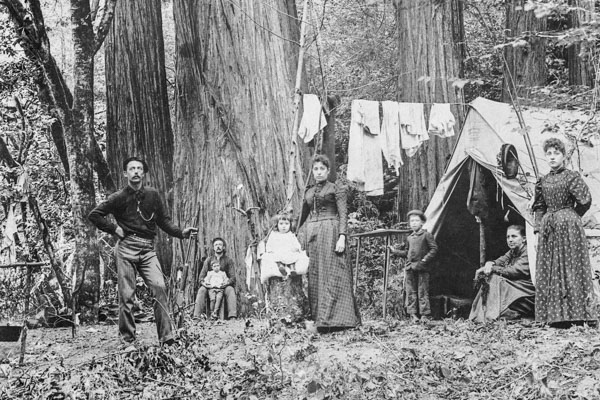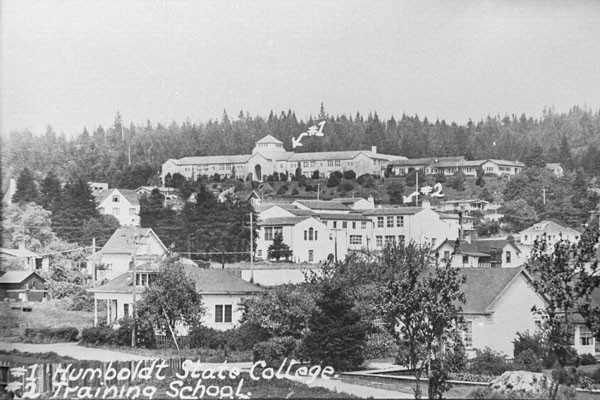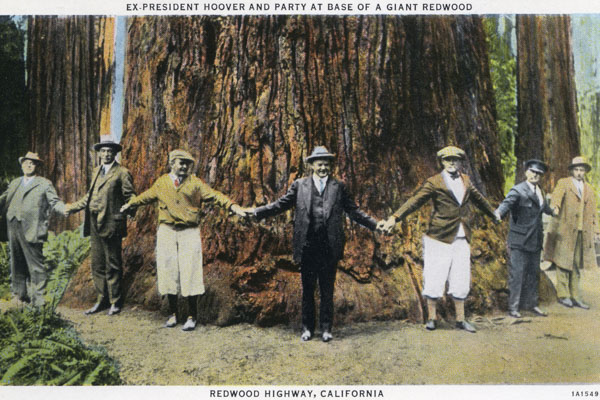You are here
Humboldt County: A Briefest of Histories
by Susie Van Kirk
Prepared for the Shades of Humboldt Project
May 1999 - Humboldt County Library
Humboldt County was already multi-cultural when Euro-Americans arrived in the spring of 1850. The indigenous people occupied specific territories, spoke languages of several different stocks, and had similar but different social and cultural structures. The Wiyot, Yurok, Hupa, Karok, Chilula, Whilkut, and the southern Athabascans, including the Mattole and Nongatl practiced lifeways carefully prescribed by cultural and religious mores. Humboldt's Indian communities made and continue to make significant contributions to the history and development of the county.
Ocean exploration of the northern coast of California included Spanish, Russian and British ships, with the first recorded Humboldt landing at Trinidad by the Spanish in 1775. The first entrance to Humboldt Bay was in 1806 by an American with Aleut hunters, all in the employ of the Russian-American Company out of Sitka. But it wasn't until rediscovery by land by the Gregg-Wood Party in December 1849, that the region's history was forever defined. Spring 1850 brought the first ships to Humboldt and Trinidad bays, where men, generally from the States, disembarked on their way to the gold mining districts on the Klamath, Salmon and Trinity rivers. First settled as a point of arrival and as a supply center for these interior mines, Eureka, Union (Arcata), and Trinidad were hubs of activity. But as the excitement and rush for gold subsided, the prospects for economic well-being, if not wealth, shifted to the region's premiere resources - big trees, salmon, and land.
This redirection resulted in the arrival of new groups of people from foreign shores and different cultures and, very importantly, the settlement of the county. The Chinese came first to mine on the Klamath and Salmon rivers, work in the fish canneries on lower Eel River, and later to build railroads. They were forcibly expelled in 1885. Americans and later Italians fished commercially on lower Eel River, the Italians acting as the buyers for San Francisco firms. Canadian "Blue Noses" from the maritime provinces, particularly Nova Scotia and New Brunswick, came to work in Humboldt's woods. William Carson, of Carson Mansion fame, developed logging and milling operations around the bay and recruited workers from his home in New Brunswick. Operations on Washington and Jacoby creeks created a community of Canadian woodsmen that came to be known as Bayside. Some of their descendants are still there, as well as the houses they built along Old Arcata and Graham roads.
With the establishment of dairying operations in the latter part of the 19th century, Swiss-Italian immigrants came to work for others on the bottom lands of Mad and Eel rivers, in the Orick valley, and on the coastal plains around the lagoons. But it didn't take long before industry and ingenuity made these dairyman owners of both land and cows. Many residents of the Ferndale and Loleta area trace their ancestry to these immigrants of a century ago. The Portuguese, who came to Humboldt County from the Azores, also found work on dairy ranches, but the timber industry provided employment for many.
People of Slavic origins came at the turn-of-the-century to work in Humboldt County's woods and mills. The homes of James Malvich, Joseph Maronich, Nick Dubrovich, Cosmo Stiglich, and others remain within a few blocks of each other in East Arcata, where these families enjoyed the social activities of a Croatian society. The French found homes in Blue Lake and Arcata, published newspapers, developed townsites, and opened French restaurants. The interior prairies of the Bald Hills, Kneeland, Showers Pass, Bridgeville and the headwaters of the Van Duzen, Mad and North Fork Eel rivers were settled by Americans who ran cattle and sheep operations.
Up to and through the Second World War, this demographic and occupational structure prevailed. People came and went, of course, but the population and work remained fairly stable. The natural resources of the North Coast continued to provide livelihoods for most of Humboldt County's people. Large timber companies, such as Hammond, Northern Redwood Lumber Co., Pacific Lumber Company, and Dolbeer and Carson kept people employed. The close of the war, however, forever changed that stability. A new Doug fir/plywood industry brought woods and mill workers from Oregon and Washington. Gypo loggers and seat-of-the-pants mills appeared overnight. Workers from Arkansas and Oklahoma found ready work. On the peninsula, Manila became a settlement of these folks, many of whom brought home the scrap wood from the mill at Samoa to build their houses. In 1947, Arcata was a lumber boom town with 30 mills in operation and more to come. Railroad shipments of lumber broke records year after year.
Timber dominated the economic and political life of the county well into the 1970s, but times were changing. College students, back-to-the-land refugees, and environmentalists brought a new perspective to resource use. What had once been a totally resource-extractive economy became a more diverse economy which included education, health and social services, resource protection and restoration, and government. And new groups of immigrants arrived, notably Hispanic workers and their families and refugees from countries impacted by the Vietnam War.
An incomparable natural environment and a diversity of people and cultures have created a history for Humboldt County as rich as any in California.
More by Susie Van Kirk | NCN Homepage | NCN Sitemap
The Northwest California Newspapers Website is managed by Special Collections located in the Cal Poly Humboldt Library.
